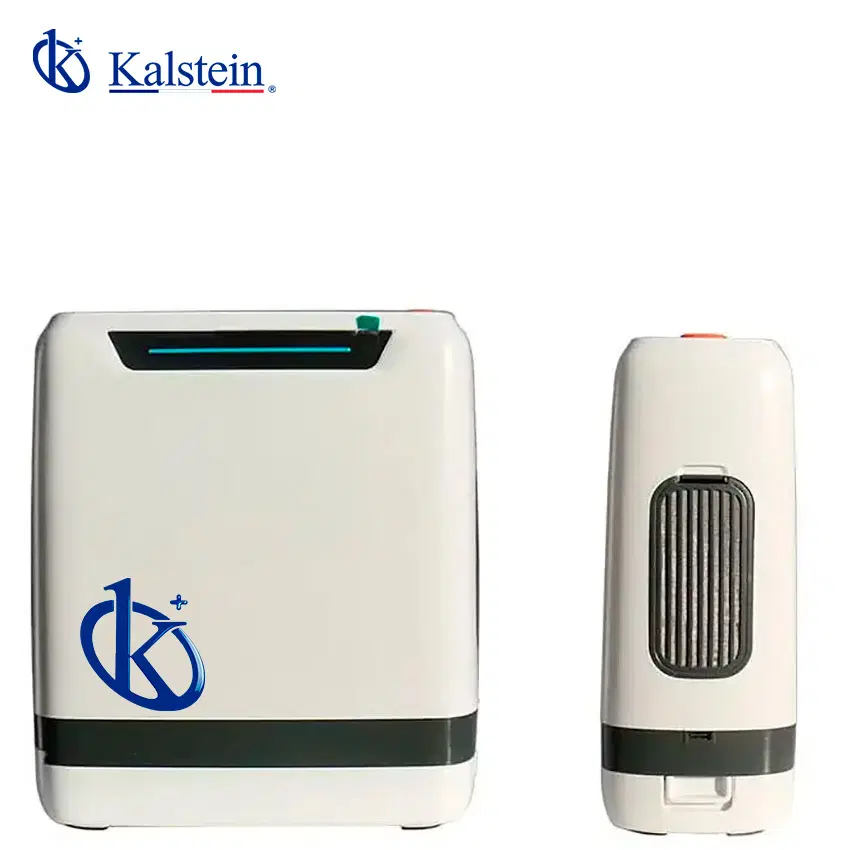In the world of medical devices, continuous flow battery-powered oxygen concentrators have revolutionized the way patients with respiratory diseases manage their treatment. Among the leading players in the market are the oxygen concentrators from Kalstein, LoveGo Medical, AbbaOxígeno, and Dedakj.
In this article, we will compare these devices, highlighting their advantages and disadvantages, with a focus on why the Kalstein option stands out as the best choice.
We understand that you need equipment that delivers maximum value to your laboratory. We invite you to visit https://kalstein.de/category-product/medical-line/oxygen-concentrator/, to immerse yourself in our universe of cutting-edge technology equipment. Our prices are competitive and accessible, we combine the convenience of online shopping with the guarantee of an exceptional product. Because you deserve the best, we create and offer top-tier laboratory equipment. Make your choice today, where science comes to life. https://kalstein.de/
Innovation and Design of the Kalstein Concentrator
The continuous flow battery-powered oxygen concentrator from Kalstein is characterized by its compact and lightweight design, ideal for facilitating patient mobility. This device can provide high-purity oxygen consistently, ensuring patients can maintain adequate oxygen levels at all times without interruptions.
The ergonomic design and use of durable materials ensure that the Kalstein concentrator can withstand daily use and travel conditions. Additionally, its long-lasting battery allows for up to 12 hours of continuous operation, making it ideal for patients who need supplemental oxygen throughout the day without frequent recharging.
Performance and Efficiency in Medicine
Efficiency in medicine is a crucial aspect when considering any medical device. The Kalstein oxygen concentrator stands out for its energy efficiency and its ability to deliver continuous oxygen flow with minimal energy consumption. This not only reduces long-term operating costs but also ensures that the device is environmentally friendly.
Compared to its competitors, such as the LoveGo Medical concentrator, which offers up to 7 liters per minute but has a limited battery time of 14 hours, the Kalstein stands out for its balance between performance and battery life. This balance is essential for patients who require prolonged use without compromising treatment quality.
Improvement in Patient Treatment
The use of a continuous flow battery-powered oxygen concentrator can signify a significant improvement in the treatment of patients with chronic respiratory diseases. These devices’ ability to provide consistent oxygen improves patients’ quality of life, allowing them to perform daily activities more easily.
The Kalstein concentrator not only provides a constant oxygen flow but is also equipped with advanced features such as low oxygen level alarms and low battery warnings. These features ensure that the patient is always informed about the device’s status, avoiding risky situations. In comparison, the Dedakj model offers similar alarms, but its continuous flow capacity is limited to 3 liters per minute, which may not be sufficient for all patients.
Advantages and Disadvantages of Competitors
When analyzing the market competitors, it is important to consider both the advantages and disadvantages of each model:
LoveGo Medical:
-
Advantages: High flow capacity of up to 7 liters per minute, 14-hour battery life.
-
Disadvantages: Heavier and larger, which may hinder portability for some patients.
AbbaOxígeno:
-
Advantages: Variety of models and flow options, available technical support.
-
Disadvantages: Shorter battery life compared to Kalstein, some models can be noisier.
Dedakj:
-
Advantages: Compact and lightweight design, easy to transport.
-
Disadvantages: Continuous flow capacity limited to 3 liters per minute, which may not be enough for patients with higher oxygen needs.
Detailed Comparison
|
Feature |
Kalstein |
LoveGo Medical |
AbbaOxígeno |
Dedakj |
|
Flow Capacity |
5 liters per minute |
7 liters per minute |
5 liters per minute |
3 liters per minute |
|
Battery Life |
Up to 12 hours |
Up to 14 hours |
Up to 10 hours |
Up to 8 hours |
|
Weight |
3.5 kg |
5 kg |
4 kg |
2.5 kg |
|
Size |
Compact and ergonomic |
Larger and heavier |
Varies by model |
Very compact and lightweight |
|
Safety Alarms |
Yes |
Yes |
Yes |
Yes |
|
Ease of Transport |
High |
Medium |
Medium |
Very high |
Advantages of Kalstein Over Competitors
When comparing the Kalstein oxygen concentrator to its competitors, the advantages are clear. The combination of continuous oxygen flow, long battery life, and compact design make Kalstein the preferred choice for many patients. Efficiency in medicine is another key factor, as Kalstein offers an excellent balance between energy consumption and performance, resulting in lower operating costs and a smaller environmental footprint.
Furthermore, the advanced safety features and alerts of the Kalstein device ensure that patients are always informed about their treatment status, adding an extra layer of confidence and peace of mind.
Conclusion
In summary, when considering a continuous flow battery-powered oxygen concentrator, it is crucial to evaluate several factors such as flow capacity, battery life, weight, and safety features. Although there are various options available in the market, the Kalstein oxygen concentrator stands out for its balance between performance, efficiency, and convenience. This makes it the best option for patients looking to improve their quality of life and manage their treatment effectively.
Choosing an oxygen concentrator not only affects efficiency in medicine but can also make a significant difference in improving patient treatment. With the Kalstein oxygen concentrator, patients can breathe without interruptions and enjoy a more active and healthy life.

